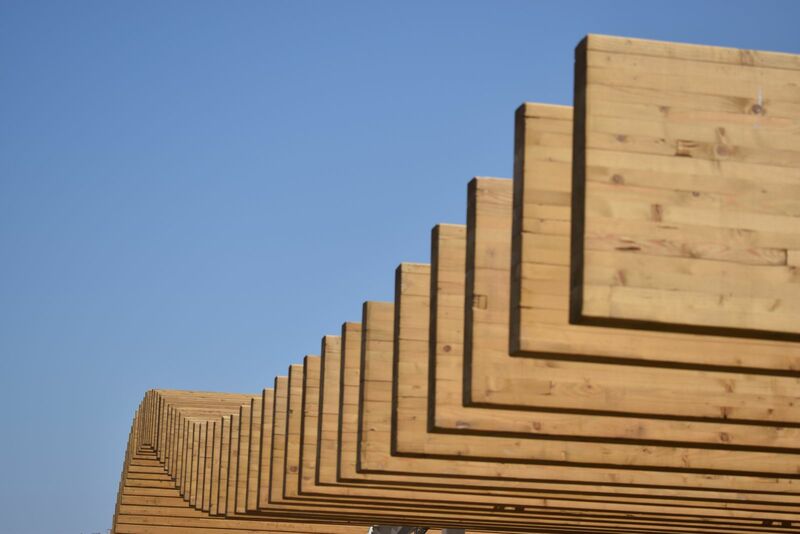
In a July 19 Barchart article, I highlighted that the price of physical lumber for September delivery at $562 per 1,000 board feet was trending higher. In that piece, I discussed how lumber reflects the trajectory of interest rate hikes, suggesting, “The central bank paused rate hikes in June 2023. Any further rate increases will likely be marginal, given declining inflationary pressures. Lumber is signaling that the Fed has nearly reached its rate hike limit, and mortgage rates could be peaking at the 7% level.”
While inflation data continues to show a decline in the economic condition, it remains more than double the Fed’s 2% target rate. The central bank increased the Fed Funds Rate by another 25 basis points at the late July meeting to a midpoint of 5.375%.
The rate hike caused lumber to fall below the $500 level before recovering.
Lumber retreated as rates moved higher, but the price stabilized
After reaching a $597 per 1,000 board feet high on July 10, 2023, physical lumber prices dropped as the Fed remained vigilant in its commitment to fight high inflation. The July 25 basis point increase in the Fed Funds Rate, recession fears, and the highest mortgage rates in years sent lumber prices lower.

The chart highlights the 17.9% decline to $490 per 1,000 board feet on August 9. After probing below the $500 level, physical lumber futures for September 2023 delivery moved higher and was at $530 on August 17.
Mortgage rates remain at the highest level in years
While lumber is sensitive to the overall interest rate environment, mortgage rates are the critical factor driving new home construction.
Many homeowners refinanced mortgage obligations over the past years at rates below 3%. A fixed-rate 30-year conventional mortgage is over the 7% level in mid-August 2023. The monthly payment on a $400,000 convention mortgage has increased by more than $1,300, causing many homeowners to remain in their current houses. Meanwhile, home prices have not declined because of short supplies. While the current environment supports those selling an existing home with significant equity and buying a newly constructed home for cash, the overall new home construction market is not booming, weighing on lumber demand.
Increasing wildfires impacting North American timberlands is another factor supporting lumber prices above the $500 level. However, an over 7% mortgage rate is not bullish for lumber prices.
Lumber tends to move before other markets as it is an interest rate barometer
Lumber’s low liquidity is why it can experience significant price variance that leads to the explosive rallies and implosive price corrections we have witnessed over the past years.
While lumber futures are illiquid, the industrial commodity remains a leading interest rate and economic barometer, with its illiquidity working in its favor as a bellwether because of its penchant for explosive and implosive moves. The dramatic rallies from 2020 through 2022 signaled the highest inflation in decades, and the corrections were a sign of the Fed’s monetary policy path. Lumber’s dramatic price moves have been signals of economic and interest rate changes over the past years. The low liquidity fosters its position as a leading indicator as lumber tends to experience substantial price moves before other more liquid raw material futures markets.
Watch lumber but do not trade the futures
Lumber futures may be a barometer but are not tradeable for investors or speculators. The low liquidity tends to lead to price gaps where bids to purchase lumber futures disappear during selloffs and offers to buy evaporate when the price rallies. Therefore, slippage or the cost of executing a new position or exiting an existing long or short risk position can be substantial. Liquidity is a crucial consideration for traders, market makers, hedgers, investors, and other market participants. Lumber futures do not offer the critical mass necessary to create a liquid and effective trading environment.
The CME addressed lumber’s liquidity by delisting the old random-length contract and introducing a smaller physical contract with more flexible delivery and quality aspects. However, the open interest or the total number of open long and short positions in the physical lumber futures stood at only 8,203 contracts on August 16, with an average daily trading volume of under 1,000 contracts, hardly enough to support a liquid environment for the market participants.
Coming into the offseason during winter
The peak construction season is spring, and at the end of the 2023 summer, the offseason for building is on the horizon. Lumber futures tend to reflect seasonality. In typical years, lumber reaches seasonal lows as the winter season approaches. However, 2023 is no typical year with an aggressive Fed that may have reached its limit on Fed Funds Rate increases. Moreover, the U.S. domestic and geopolitical landscapes are a minefield of potential problems.
Markets reflect economics and politics, and lumber is a sentiment barometer, given its penchant for extreme price volatility. Keep an eye on lumber’s price for clues about other markets, as the path of least resistance of lumber prices can be a leading indicator.
On the date of publication, Andrew Hecht did not have (either directly or indirectly) positions in any of the securities mentioned in this article. All information and data in this article is solely for informational purposes. For more information please view the Barchart Disclosure Policy here.






